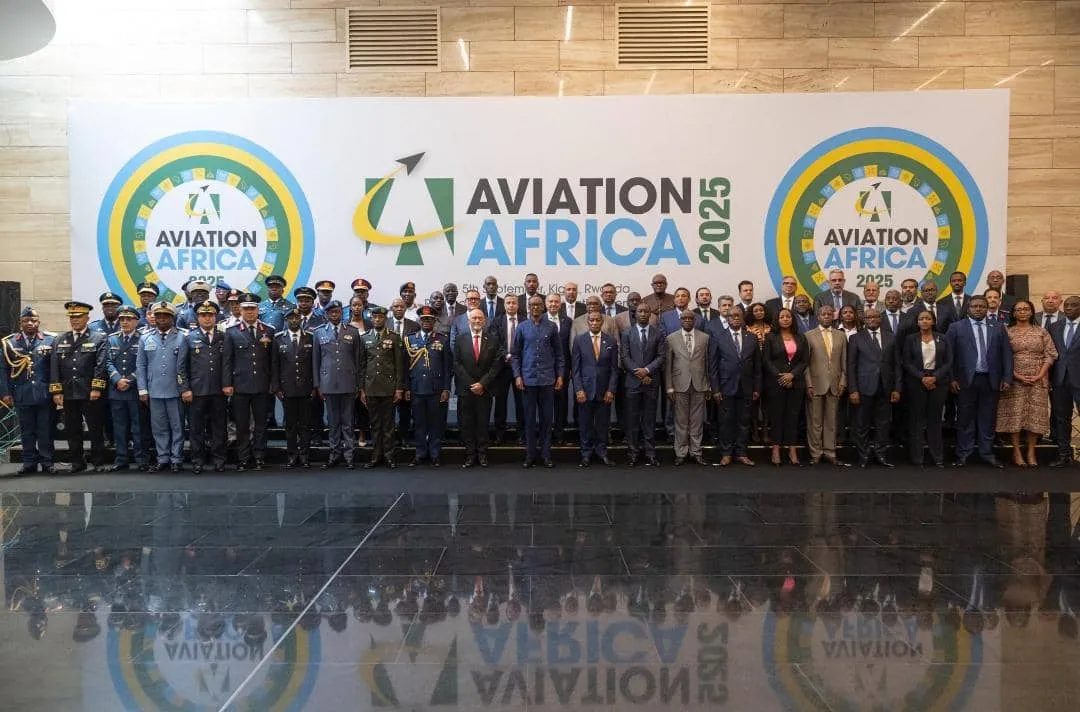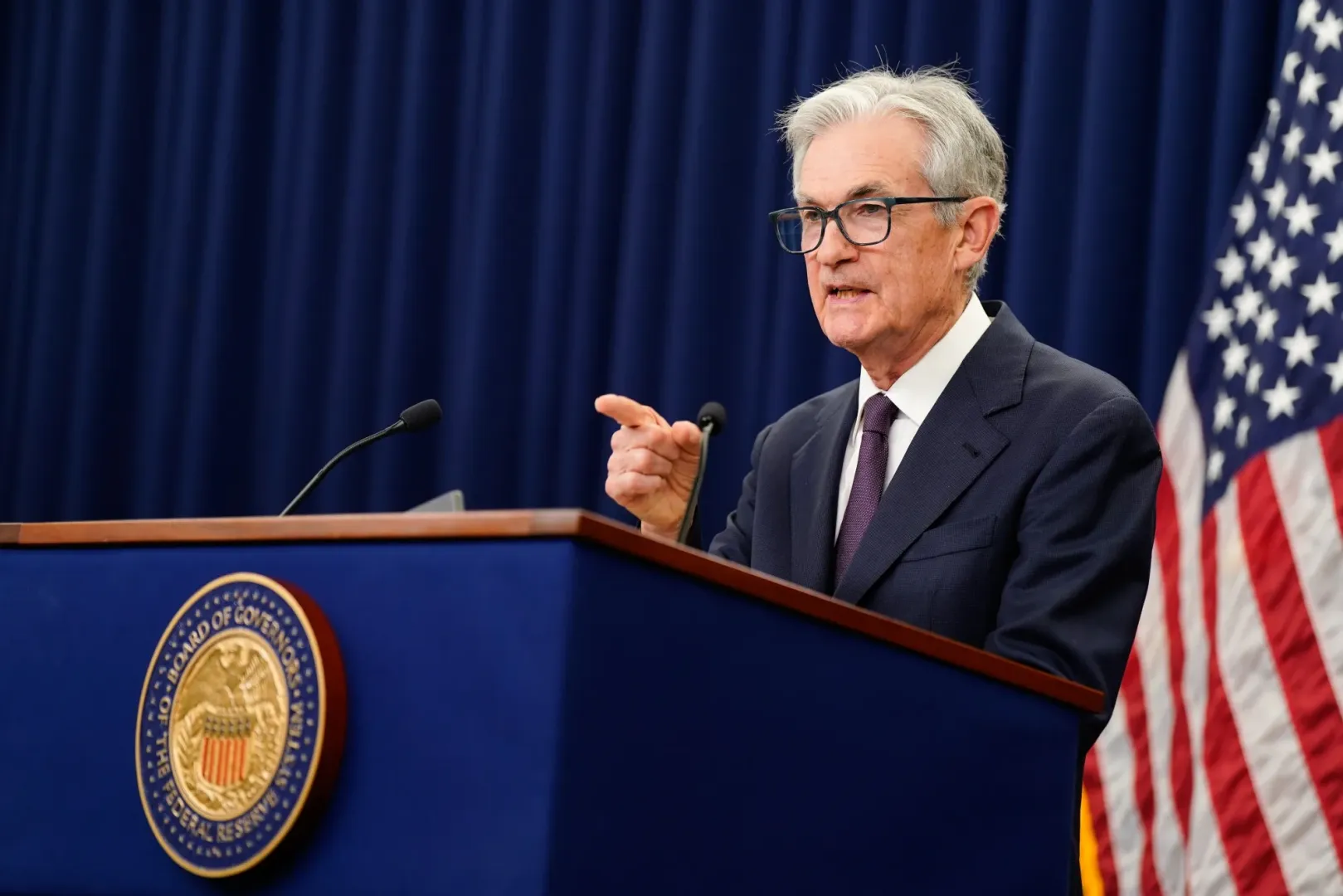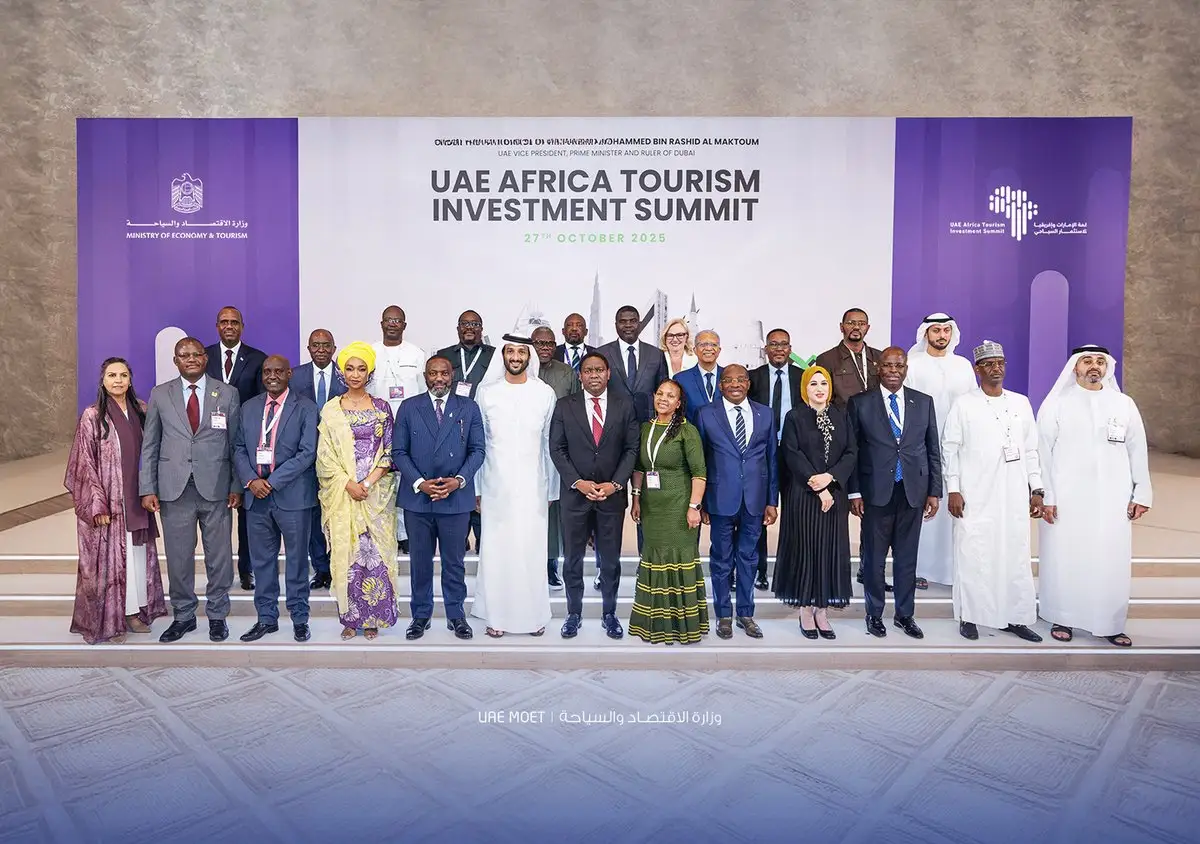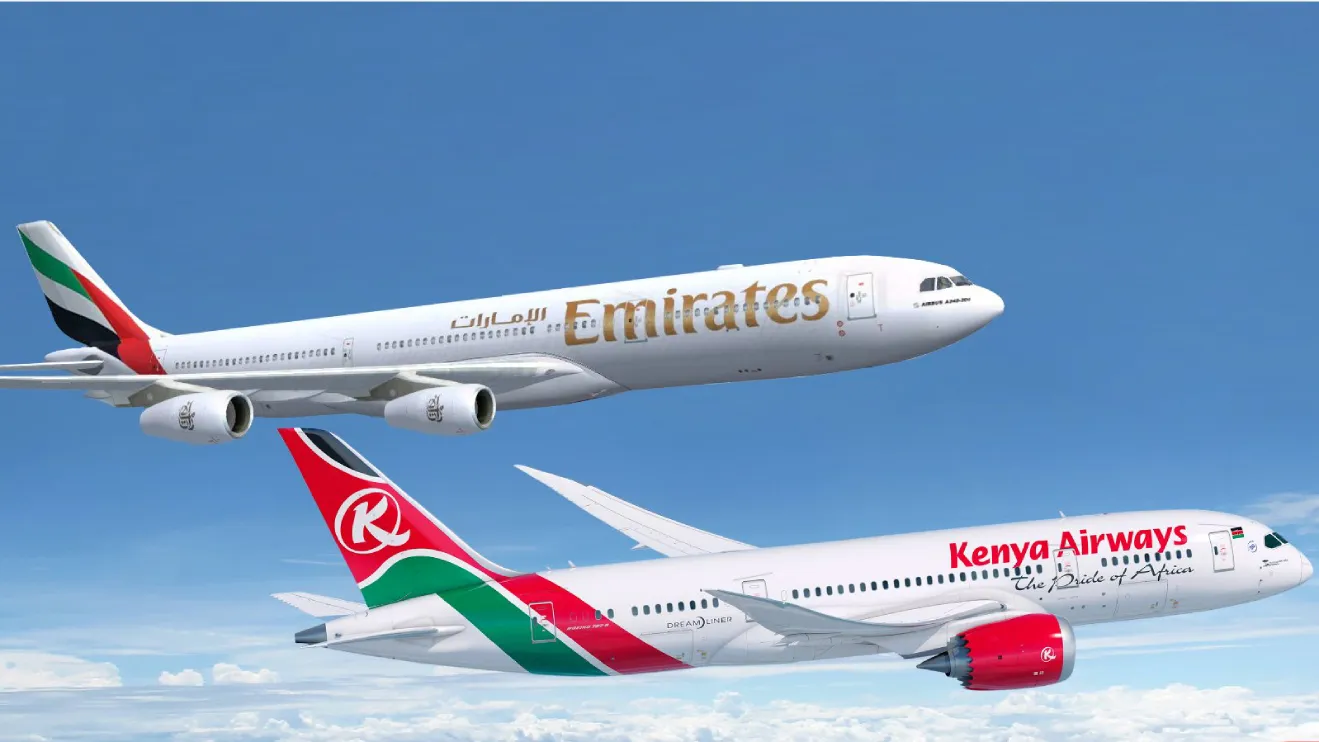In a landmark address at the III Financing Summit for Africa’s Infrastructure Development held in Luanda, Angola, H.E. Lerato D. Mataboge, African Union Commissioner for Infrastructure and Energy, unveiled an unprecedented US$30 billion strategic investment framework designed to revolutionize the continent’s aviation sector over the next decade. The announcement, delivered during a high-level session focused on financing and modernizing African civil aviation infrastructure, represents one of the most ambitious infrastructure initiatives in Africa’s recent history and signals a transformative shift in how the continent approaches air transport connectivity.
Build the future you deserve. Get started with our top-tier Online courses: ACCA, HESI A2, ATI TEAS 7, HESI EXIT, NCLEX-RN, NCLEX-PN, and Financial Literacy. Let Serrari Ed guide your path to success. Enroll today.
SAATM: A Vision for Integrated African Skies
The comprehensive investment plan centers on accelerating the implementation of the Single African Air Transport Market (SAATM), a flagship project established under the African Union’s Agenda 2063 framework. SAATM aims to create a unified, liberalized air transport market across the continent, eliminating barriers that have long fragmented African aviation and limited connectivity between member states.
Commissioner Mataboge articulated a compelling vision that positions aviation as far more than a transportation service. “Aviation is not merely a mode of transport,” she emphasized. “It is a strategic engine of continental integration and a core enabler of Agenda 2063 and the AfCFTA. The Single African Air Transport Market will only succeed if we build the modern, safe, and efficient infrastructure that Africa’s growth demands.”
This perspective reflects a growing recognition among African policymakers that air transport infrastructure represents critical economic infrastructure—essential not just for moving people and goods, but for enabling trade, tourism, investment, and regional integration. The success of SAATM is intrinsically linked to the African Continental Free Trade Area, which seeks to create the world’s largest free trade zone by connecting 1.3 billion people across 55 countries.
The Infrastructure Gap: Data-Driven Investment Priorities
The US$30 billion investment target is grounded in rigorous research rather than aspirational thinking. Commissioner Mataboge cited findings from a comprehensive Continental Aviation Infrastructure Gap Analysis conducted in partnership with the African Civil Aviation Commission (AFCAC), the International Civil Aviation Organization (ICAO), and the World Bank. This collaborative assessment revealed that Africa requires between US$25 billion and US$30 billion over the next decade simply to address critical infrastructure deficiencies and meet projected demand.
The urgency of this investment becomes clear when examining passenger traffic projections. Current data indicates that African air travel is poised for explosive growth, with passenger numbers expected to triple from approximately 160 million in 2024 to nearly 500 million by 2050. This dramatic increase reflects multiple factors: Africa’s rapidly growing middle class, expanding business opportunities driven by AfCFTA implementation, increasing tourism, and improved connectivity between African nations.
The infrastructure requirements break down into several critical categories. Approximately US$10 billion is allocated for airport and aerodrome infrastructure improvements, including runway expansions, terminal modernization, and the development of new regional airports to serve underserved markets. An additional US$8 billion targets the modernization of communication, navigation, and meteorological systems—the invisible but essential technological infrastructure that ensures safe and efficient air traffic management across the continent.
Innovative Financing Strategy: Leveraging Public Capital to Attract Private Investment
Recognizing that public resources alone cannot meet the scale of investment required, the African Union has developed a sophisticated financing strategy designed to use catalytic public funding to unlock substantially larger private and institutional investment. The plan aims to mobilize US$10 billion in strategic public finance from African governments, development partners, and multilateral institutions, which would then serve as the foundation for attracting an additional US$20 billion from private sector investors and institutional capital providers.
This approach aligns with global best practices in infrastructure finance, where strategic public investment—whether through direct funding, guarantees, or risk-sharing mechanisms—can significantly reduce investment risks and make projects more attractive to private capital. The African Union is working closely with Development Finance Institutions (DFIs) and the African Union Development Agency-NEPAD (AUDA-NEPAD) to structure investments that meet both development objectives and commercial investment criteria.
The partnership with AUDA-NEPAD is particularly significant, as the agency plays a central coordinating role in the Programme for Infrastructure Development in Africa (PIDA), the continent’s long-term infrastructure development framework. By aligning aviation infrastructure priorities with PIDA’s broader mandate, the AU ensures that aviation investments complement and reinforce other critical infrastructure initiatives in energy, transport, and information and communications technology.
Technological Modernization: Building Smart, Connected African Airports
The US$30 billion investment plan goes beyond concrete and steel, incorporating cutting-edge aviation technologies that will position African airports among the most advanced globally. The modernization strategy integrates sophisticated systems such as Airport Collaborative Decision-Making (A-CDM), which enables real-time information sharing between airlines, airports, air navigation service providers, and ground handlers to optimize airport operations and reduce delays.
Similarly, the plan emphasizes implementation of System-Wide Information Management (SWIM), a comprehensive data-sharing framework that enables seamless information exchange across all aviation stakeholders. SWIM represents the digital backbone of modern aviation, facilitating everything from flight planning and weather information sharing to air traffic management and operational coordination across borders.
These technological investments are essential for creating the seamless continental airspace that SAATM envisions. Rather than 55 separate national aviation systems with varying levels of technological sophistication, Africa is working toward an integrated network where aircraft can move efficiently across the continent with standardized procedures, interoperable systems, and harmonized regulations.
The technology focus also extends to air traffic management modernization, including implementation of Performance-Based Navigation (PBN) procedures that enable more efficient flight paths, reduced fuel consumption, and increased airport capacity. These advanced navigation techniques are particularly important for Africa, where many airports currently lack the sophisticated ground-based navigation infrastructure common in developed aviation markets.
One decision can change your entire career. Take that step with our Online courses in ACCA, HESI A2, ATI TEAS 7, HESI EXIT, NCLEX-RN, NCLEX-PN, and Financial Literacy. Join Serrari Ed and start building your brighter future today.
Sustainability at the Core: Green Aviation Infrastructure
In a significant strategic decision, the African Union has embedded environmental sustainability into the very foundation of its aviation modernization plan. Commissioner Mataboge emphasized that every infrastructure project is being designed to meet international green standards, reduce operational carbon footprints, and position African aviation as an attractive investment destination for the rapidly growing pool of climate-focused capital.
“As we modernize African skies, we are doing so sustainably,” Commissioner Mataboge stated. “Every project we prepare is designed to meet global green standards, reduce fuel consumption and CO₂ emissions, and make African aviation an attractive asset class for the world’s growing pool of climate-focused capital.”
This sustainability focus manifests in multiple ways throughout the investment plan. Airport infrastructure projects incorporate renewable energy solutions, including solar power installations on terminal roofs and parking structures, energy-efficient building designs that minimize heating and cooling requirements, and advanced waste management systems. Several African airports are already pioneering solar energy adoption, and the new investment framework aims to accelerate this trend across the continent.
The emphasis on sustainability serves multiple strategic purposes. First, it reduces the long-term operational costs of airport facilities by decreasing dependence on expensive imported fossil fuels. Second, it aligns African aviation with global climate commitments and the International Civil Aviation Organization’s carbon offset and reduction scheme. Third—and perhaps most importantly from a financing perspective—it makes African aviation projects eligible for green bonds, climate finance facilities, and investment from ESG-focused institutional investors that increasingly dominate global capital markets.
Continental Collaboration: A Pan-African Partnership Approach
The Luanda summit session that hosted Commissioner Mataboge’s announcement brought together an impressive array of continental aviation leaders, underscoring the collaborative approach essential to the initiative’s success. The panel included Ministers of Transport from Zimbabwe and Rwanda—two countries that have been active participants in SAATM implementation—along with the Secretary-General of the African Civil Aviation Commission and the Director of Strategies at Morocco’s Ministry of Transport and Logistics.
Private sector perspectives came from the CEOs of Ethiopian Airlines, Africa’s largest and most profitable carrier, and TAAG Angola Airlines, the national carrier of the summit’s host nation. These airline leaders bring crucial operational insights into infrastructure needs and can help ensure that investments align with actual market requirements rather than theoretical planning documents.
International development partners were represented by officials from the World Bank Group and the European Commission, both of which have extensive experience financing infrastructure projects in Africa and can provide technical expertise, risk mitigation instruments, and direct funding for priority projects.
This multi-stakeholder approach reflects the complexity of modernizing continental aviation infrastructure. Success requires not just government commitment and funding, but also regulatory harmonization across 55 member states, private sector investment and operational expertise, technical support from international aviation organizations, and sustained political will to overcome national protectionist tendencies that have historically fragmented African aviation.
Economic Integration and Development Impact
The US$30 billion aviation infrastructure investment must be understood within the broader context of Africa’s economic transformation agenda. The African Continental Free Trade Area, which entered into force in 2019, aims to create a single market for goods and services across Africa, with free movement of business persons and investments. However, the success of this ambitious trade liberalization depends fundamentally on the physical infrastructure that enables goods, services, and people to move efficiently across borders.
Air transport plays a uniquely important role in African connectivity. The continent’s geography—characterized by vast distances, challenging terrain, and in many regions inadequate road and rail networks—makes aviation essential for both business travel and time-sensitive cargo transport. Yet Africa remains one of the least connected continents for air travel, with many intra-African routes still requiring connections through European or Middle Eastern hubs due to limited direct service between African capitals.
The economic impact of improved aviation connectivity extends far beyond the aviation sector itself. Research by the African Development Bank has consistently demonstrated that improved air transport connectivity stimulates tourism, which is a major employment generator and foreign exchange earner for many African economies. It facilitates business investment by reducing transaction costs and enabling face-to-face interaction between potential partners. It enables African agricultural exporters to access high-value markets for perishable goods, and it supports the development of regional value chains that can make African manufacturers more competitive.
Implementation Timeline and Next Steps
While Commissioner Mataboge outlined an ambitious vision, she also emphasized that implementation will require sustained commitment over multiple years. The ten-year investment horizon acknowledges the complexity of aviation infrastructure projects, which typically require extensive planning, environmental assessments, regulatory approvals, land acquisition, and construction periods that can span several years even for individual airports.
The African Union is currently working with AUDA-NEPAD and AFCAC to develop a prioritized project pipeline that will guide initial investments. Priority projects likely include airports serving major economic centers and key tourism destinations, critical air traffic management system upgrades that affect safety or capacity at multiple facilities, and strategic connectivity investments that can unlock service to underserved regions.
Parallel to physical infrastructure investments, the AU continues working on the policy and regulatory reforms essential to SAATM’s success. These include harmonizing aviation safety standards and oversight, liberalizing air service agreements to allow greater competition and new route development, and establishing transparent, non-discriminatory airport pricing mechanisms that support both infrastructure investment and airline viability.
Conclusion: Building Africa’s Aviation Future
Commissioner Mataboge’s announcement in Luanda represents more than a funding commitment—it articulates a comprehensive vision for Africa’s aviation future. By investing US$30 billion in modern, sustainable, technologically advanced aviation infrastructure over the next decade, Africa is positioning itself to capture the substantial economic benefits that flow from improved air transport connectivity.
The success of this initiative will be measured not just in new runways and modernized air traffic control systems, but in the lives transformed by improved connectivity: the entrepreneurs who can build pan-African businesses, the tourists who will discover Africa’s extraordinary destinations, the families separated by distance who can reunite more easily, and the young Africans who will find employment in a growing, dynamic aviation sector.
As Africa continues its economic rise in the 21st century, the vision articulated in Luanda—of seamlessly connected African skies supporting continental integration and sustainable prosperity—offers a powerful roadmap for achieving the continent’s full potential. With strong leadership, innovative financing, and sustained commitment from all stakeholders, the dream of a truly integrated Single African Air Transport Market can become reality, unlocking unprecedented opportunities for Africa’s 1.3 billion people.
Ready to take your career to the next level? Join our Online courses: ACCA, HESI A2, ATI TEAS 7 , HESI EXIT , NCLEX – RN and NCLEX – PN, Financial Literacy!🌟 Dive into a world of opportunities and empower yourself for success. Explore more at Serrari Ed and start your exciting journey today! ✨
Track GDP, Inflation and Central Bank rates for top African markets with Serrari’s comparator tool.
See today’s Treasury bonds and Money market funds movement across financial service providers in Kenya, using Serrari’s comparator tools.
Photo source: Google
By: Montel Kamau
Serrari Financial Analyst
30th October, 2025
Article, Financial and News Disclaimer
The Value of a Financial Advisor
While this article offers valuable insights, it is essential to recognize that personal finance can be highly complex and unique to each individual. A financial advisor provides professional expertise and personalized guidance to help you make well-informed decisions tailored to your specific circumstances and goals.
Beyond offering knowledge, a financial advisor serves as a trusted partner to help you stay disciplined, avoid common pitfalls, and remain focused on your long-term objectives. Their perspective and experience can complement your own efforts, enhancing your financial well-being and ensuring a more confident approach to managing your finances.
Disclaimer: This article is for informational purposes only and does not constitute financial advice. Readers are encouraged to consult a licensed financial advisor to obtain guidance specific to their financial situation.
Article and News Disclaimer
The information provided on www.serrarigroup.com is for general informational purposes only. While we strive to keep the information up to date and accurate, we make no representations or warranties of any kind, express or implied, about the completeness, accuracy, reliability, suitability, or availability with respect to the website or the information, products, services, or related graphics contained on the website for any purpose. Any reliance you place on such information is therefore strictly at your own risk.
www.serrarigroup.com is not responsible for any errors or omissions, or for the results obtained from the use of this information. All information on the website is provided on an as-is basis, with no guarantee of completeness, accuracy, timeliness, or of the results obtained from the use of this information, and without warranty of any kind, express or implied, including but not limited to warranties of performance, merchantability, and fitness for a particular purpose.
In no event will www.serrarigroup.com be liable to you or anyone else for any decision made or action taken in reliance on the information provided on the website or for any consequential, special, or similar damages, even if advised of the possibility of such damages.
The articles, news, and information presented on www.serrarigroup.com reflect the opinions of the respective authors and contributors and do not necessarily represent the views of the website or its management. Any views or opinions expressed are solely those of the individual authors and do not represent the website's views or opinions as a whole.
The content on www.serrarigroup.com may include links to external websites, which are provided for convenience and informational purposes only. We have no control over the nature, content, and availability of those sites. The inclusion of any links does not necessarily imply a recommendation or endorsement of the views expressed within them.
Every effort is made to keep the website up and running smoothly. However, www.serrarigroup.com takes no responsibility for, and will not be liable for, the website being temporarily unavailable due to technical issues beyond our control.
Please note that laws, regulations, and information can change rapidly, and we advise you to conduct further research and seek professional advice when necessary.
By using www.serrarigroup.com, you agree to this disclaimer and its terms. If you do not agree with this disclaimer, please do not use the website.
www.serrarigroup.com, reserves the right to update, modify, or remove any part of this disclaimer without prior notice. It is your responsibility to review this disclaimer periodically for changes.
Serrari Group 2025












